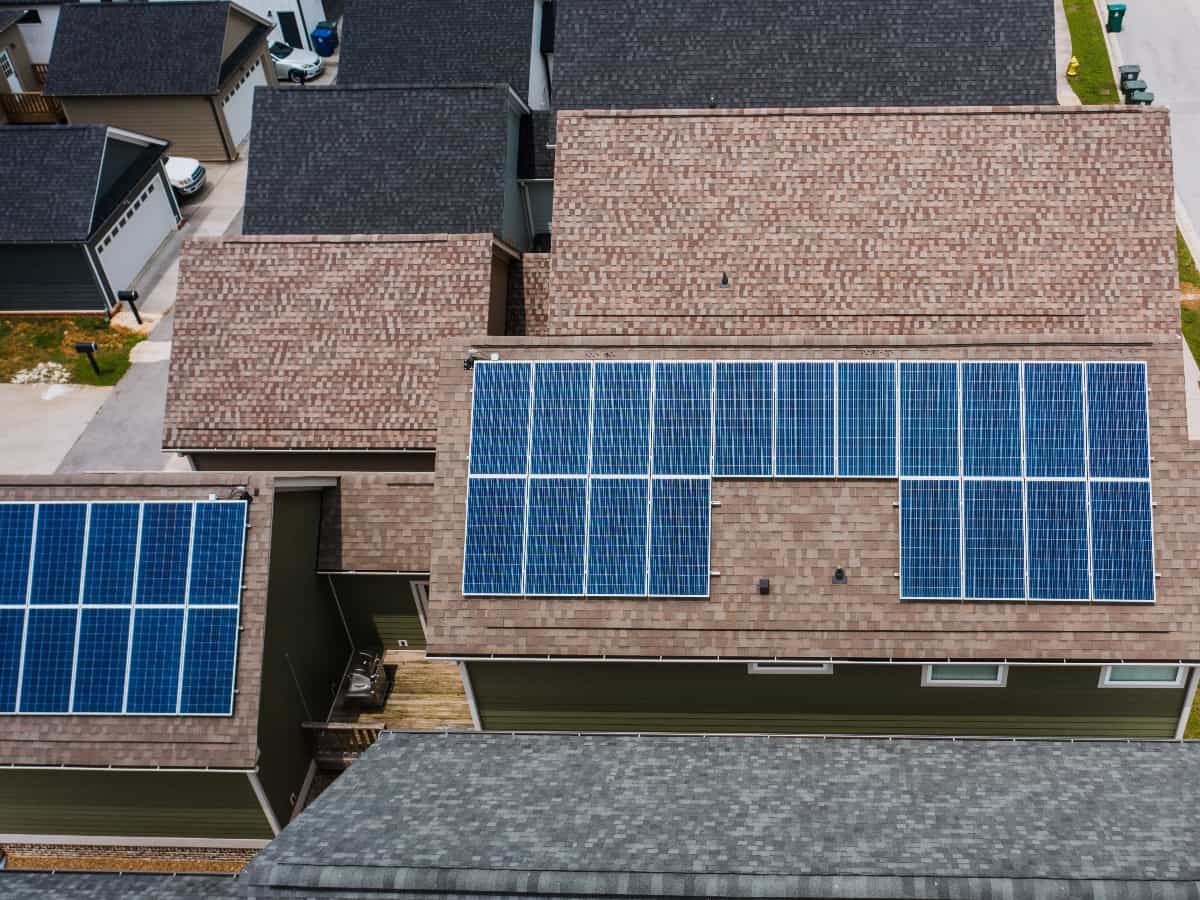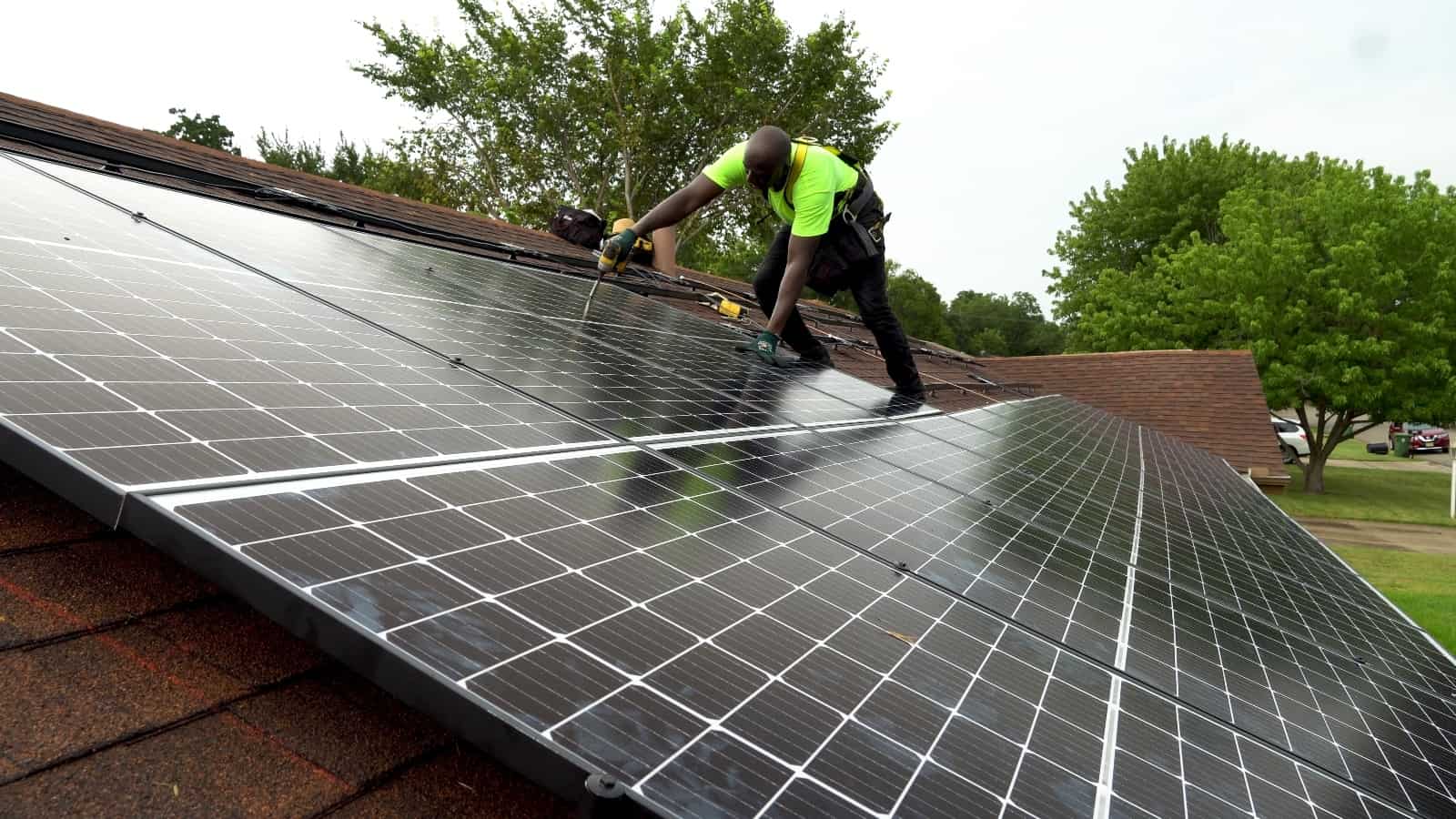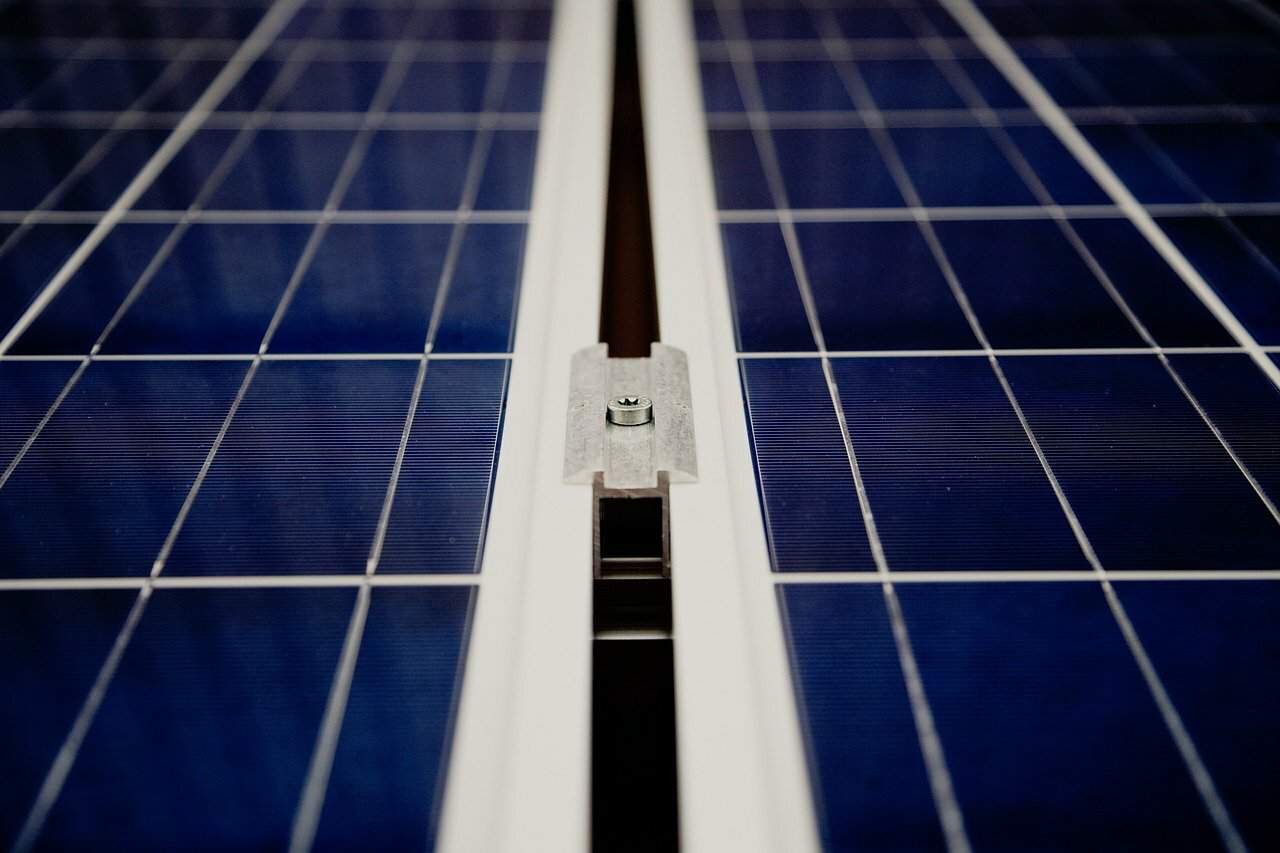If you are looking into the type of solar panels you need for your PV system, you likely know the monocrystalline vs polycrystalline decision you face is complex.
Monocrystalline and polycrystalline panels both function according to the same basic principles. They capture the sun’s rays so they can turn this energy into electricity. But what’s the difference between the two? And which one is more efficient at powering a home?
Read on to learn more to compare the differences between monocrystalline vs polycrystalline solar panels.

Discover Energy Audits with Solar Energy and ONIT Home
Try our Free Energy Audit to make sure your home is performing at optimum energy efficiency. We’ll inspect every nook and cranny of your home to make sure it’s best serving your needs. We’ll also give you tips on lowering your energy bills, conserving energy, and creating a more efficient space. To learn more about how we can help you maintain a top performing home, visit us online to get started!
The Difference Between Monocrystalline and Polycrystalline
Monocrystalline solar panels and polycrystalline solar panels look very similar to the naked eye. This is probably because they are both made of silicon. Silicon is a durable and abundant material, making it a popular material for solar panels. The variation between monocrystalline panels and polycrystalline panels is in the type of silicon used. To put it simply, monocrystalline panels have a single silicon crystal. Polycrystalline panels have a mixture of different crushed-up silicon crystals.
Monocrystalline Panels
Monocrystalline panels are considered higher-end than polycrystalline panels. There are two main reasons monocrystalline panels are more desirable. First, they are more efficient. Second, many people prefer the look of monocrystalline panels. Monocrystalline panels have a black hue, while polycrystalline panels are blue.
Monocrystalline panels are also made differently than polycrystalline panels. The silicon used in monocrystalline panels must first be formed into bars before being cut into wafers. These wafer-like monocrystalline panels are more efficient because the electrons within them can move more freely.
Polycrystalline Panels
As previously mentioned, polycrystalline panels cannot gather energy from the sun’s rays as efficiently as monocrystalline panels. However, polycrystalline panels have one major advantage over polycrystalline panels: their price tag.
Polycrystalline panels are significantly cheaper than monocrystalline panels. Also, while monocrystalline panels are often considered having a more futuristic look, some prefer the blue hue of polycrystalline.
The manufacturing process for polycrystalline panels differs greatly from monocrystalline panels. To make a polycrystalline panel, a manufacturer will melt together many shards of silicon to form the silicon wafers used in a panel. The construction of a polycrystalline panel gives the electrons in the silicon less freedom to move freely, which reduces the panel’s efficiency.
Efficiency: Monocrystalline vs Polycrystalline
We said earlier that monocrystalline is more energy-efficient in the monocrystalline vs polycrystalline debate. However, it is important to know just how much more efficient to determine whether the higher initial purchase price is worth it.
The difference in efficiency between monocrystalline and polycrystalline panels varies from model to model. However, monocrystalline is roughly 20% more efficient than polycrystalline.
To get more exact data, look into the statistics released by each manufacturer about their products. When doing so, regard the manufacturer’s estimates as the best likely scenario.
Cost: Is Monocrystalline or Polycrystalline More Affordable?
As previously mentioned, monocrystalline solar panels usually have a higher initial purchase price than polycrystalline panels. Of course, prices vary from manufacturer to manufacturer.
Generally, monocrystalline panels are roughly 10-15% more expensive. However, the question of which is more affordable is more complicated than simply comparing the initial purchase price.
As monocrystalline panels are more efficient, you will be able to more than make up for the initial price difference over an extended period. This means that polycrystalline panels are more affordable upfront, while monocrystalline panels are more affordable in the long run.
Which Type of Solar Panel Lasts Longer?
Monocrystalline solar panels and polycrystalline solar panels last for about the same time. Many manufacturers will provide 25-year warranties on both their monocrystalline and polycrystalline panels.
Over time, monocrystalline panels and polycrystalline panels will both slowly lose efficiency. However, they will not wear out within 25 years if properly maintained. In fact, monocrystalline and polycrystalline panels can function properly for longer than 25 years. However, homeowners will replace panels after reaching the quarter of a century mark because they are no longer as efficient as they were new.

Is Monocrystalline or Polycrystalline Better for Residential Applications?
Both monocrystalline and polycrystalline panels are common in residential applications. Additionally, the two panels work fine on residential properties. While polycrystalline is certainly a valid option for a residential application (especially if the homeowner is on a tight budget) most experts recommend homeowners go with monocrystalline panels.
A residential building will have very limited roof space that is suitable for solar panels. This means that homeowners need to get as much energy as possible from a small space. As monocrystalline panels are more efficient, they work better in this situation. Polycrystalline panels may work better on a commercial building with a large, flat roof.
Factors To Consider Before Choosing Between Monocrystalline and Polycrystalline
There are really only three factors to consider when choosing between monocrystalline vs polycrystalline panels:
- Efficiency
- Price
- Aesthetics
Efficiency
Efficiency is high on many homeowner’s lists of priorities when they are in the market for solar panels. As previously mentioned, monocrystalline solar panels are roughly 20% more efficient than polycrystalline panels. The efficiency of polycrystalline panels is increasing. However, the prices of monocrystalline panels are also coming down.
Price
For many homeowners, price is second only to efficiency on the list of priorities when they are comparing monocrystalline vs polycrystalline.
Monocrystalline panels are roughly 10-15% more expensive than polycrystalline panels, depending on the manufacturer and the model. Keep in mind that the increased efficiency of monocrystalline panels makes them a better financial decision in the long run. Another thing to keep in mind is that monocrystalline panels are becoming more affordable as the technology becomes more widespread.
Looks
While aesthetics are a low priority for many homeowners comparing monocrystalline vs polycrystalline solar panels, keep in mind that these panels will be on your house for decades. If you’re not a fan of their aesthetic, you would not enjoy your home as much. Most people like the sleek black coloration of monocrystalline panels better than the blue hues of polycrystalline.
Some homeowners might consider Polycrystalline panels old-fashioned. However, get a good look at both types of panels to see which you would want on your home for the next 25 years. You should also keep in mind that unsightly solar panels may make it more difficult for you to sell your home when the time comes.
Are There Any Alternatives to Monocrystalline and Polycrystalline?
The vast majority of the residential solar panel market comprises monocrystalline and polycrystalline panels. However, there are other options.
The third (much less common) option: thin-film solar. Thin-film solar panels have a composite material that makes them much lighter and more flexible than traditional silicon solar panels. Therefore, thin-film solar panels are ideal for homes that do not have the roof space for traditional panels.
However, thin-film solar panels have significant drawbacks. They are considerably less efficient than either monocrystalline or polycrystalline panels. Thin-film solar panels are also not as durable as traditional silicon panels.
For the time being, thin-film solar panels are not a serious option for most homeowners. However, this technology is improving at a rapid rate. With time, they may be a more viable option.

Find The Right Solar Panel at ONIT Home
While choosing between monocrystalline and polycrystalline panels is tough, one thing remains clear. This is that solar energy is extremely beneficial for homeowners. Installing a solar power system sets you up with clean energy that’s helping the environment and saving you money each month on your electricity bill.
And when you make the switch to solar with ONIT Home, you can enjoy a two-week installation period and a 30-year warranty. We also provide a smart choice financing option to make financing your system easy and affordable. Plus, our customers get a FREE water filtration and security system to make all aspects of their home efficient. Call us at 1-833-433-0331 to get started today.



